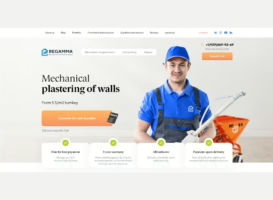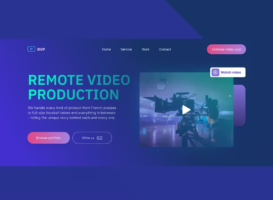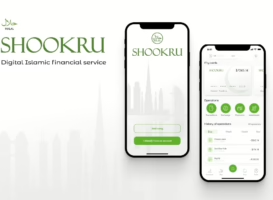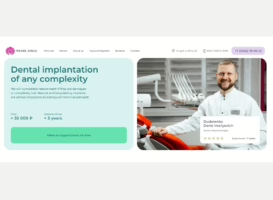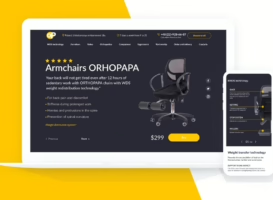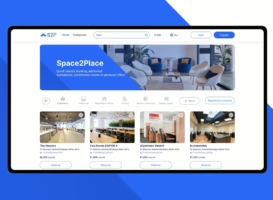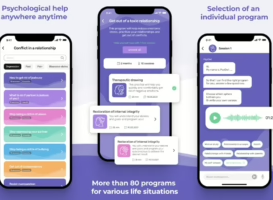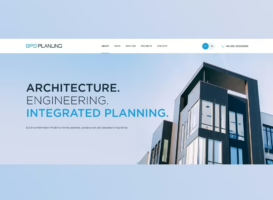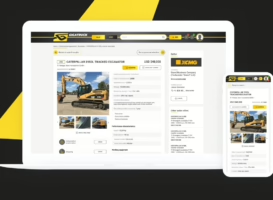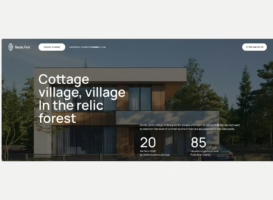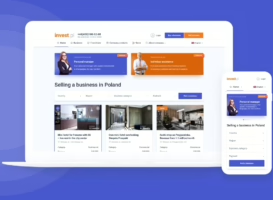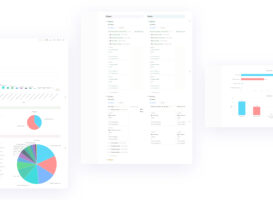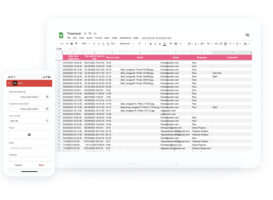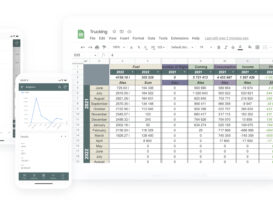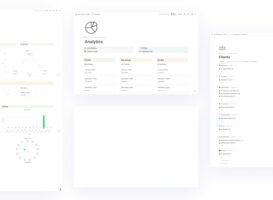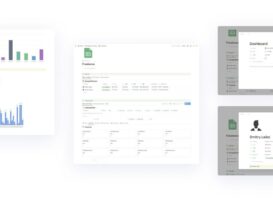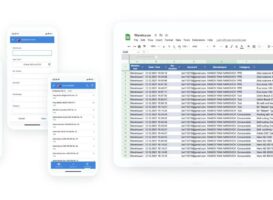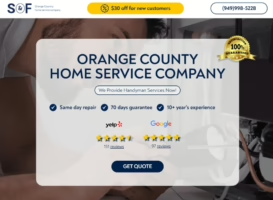Portfolio
Filter
-
IndustryIT and Finance
-
Type of workReal-Time Analytics and Financial Oversight
-
190Number of hours
A dynamic group of seasoned professionals dedicated to propelling startups to new heights. Our team brings together diverse expertise from across the globe, specializing in web development, digital marketing, compliance, and investment strategies.



Stand Out with Your Portfolio: Mastering the Art of Presentation

In a world where first impressions can pave the way to success, your portfolio stands as the beacon of your capabilities, the visual representation of your hard work and creativity. Picture this: you’ve poured your heart and soul into your projects, each one showcasing your unique talents and skills. But how do you ensure that your portfolio not only stands out but also captivates your audience, leaving a lasting impact?
Crafting a professional portfolio is more than just compiling your work; it’s about telling a compelling story that resonates with your target audience. From design prowess to problem-solving acumen, your portfolio is your chance to shine in the competitive creative industry. But where do you begin?
Let’s dive into the art of presentation and explore strategies to elevate your portfolio from a mere collection of work to a powerful tool that communicates your talent effectively. Discover how to select the right projects, structure your portfolio for maximum impact, and create a compelling narrative that speaks volumes about your skills and potential.
Introduction: How a compelling portfolio can capture attention and land opportunities
In today’s competitive design landscape, a well-crafted portfolio has the power to captivate, impress, and open doors to exciting opportunities. Whether you are a budding graphic designer, an interior designer, or a data analyst, your portfolio is your best weapon to showcase your skills, creativity, and problem-solving abilities.
A comprehensive portfolio acts as your career’s highlight reel, allowing potential employers or clients to get a glimpse of your best work. It serves as a powerful tool to communicate your unique perspective and personal brand, setting you apart from the competition.
When presented correctly, your portfolio can make a lasting impact, leaving a memorable impression on those who view it. It not only highlights your technical expertise and proficiency but also showcases your ability to communicate ideas visually.
By curating a well-crafted portfolio, you demonstrate your professionalism and attention to detail, instilling confidence in potential employers or clients. Your portfolio tells a story, showcasing your creative process and the depth of your creative potential.
In a world driven by visuals, a compelling portfolio presentation is essential. Through carefully selected projects, clear headings, and a visually appealing layout, you can guide your audience through your body of work and engage them on a deeper level.
In the following sections, we will explore various strategies and tips to help you master the art of portfolio presentation. From organizing and structuring your portfolio to incorporating case studies and tailoring it to your goals, this article will provide you with the essential tips and insights to create a standout portfolio that captures attention and lands opportunities.
Your Professional Story, Told Your Way
Your portfolio is not just a collection of your work—it’s an opportunity to showcase your unique perspective and personal brand. It’s a chance to tell your professional story in a way that sets you apart from the competition and leaves a lasting impression on potential employers or clients. Here’s why it’s important to infuse your portfolio with your own voice and style:
Captivate with Your Personality
Your portfolio is more than just a showcase of your technical skills—it’s a reflection of who you are as a designer. By telling your professional story, you give potential employers or clients a glimpse into your personality, passions, and values. This helps create a connection that goes beyond the work itself. Consider including a brief bio or an “About Me” section that gives insight into your journey and what drives your creative process.
Differentiate Yourself from the Rest
In today’s competitive design landscape, it’s crucial to stand out from the crowd. By injecting your unique perspective into your portfolio, you demonstrate your ability to bring fresh ideas and innovative solutions to the table. Showcasing your personal brand helps potential employers or clients understand what makes you special and why they should choose you over others.
Show Consistency and Coherence
When you tell your professional story through your portfolio, it adds a layer of coherence and consistency to your work. By presenting a cohesive narrative that flows throughout your projects, you not only demonstrate your ability to think holistically but also give potential employers or clients a glimpse into your problem-solving skills and creative process. This cohesive storytelling fosters trust and confidence in your abilities.
Reflect Your Target Audience
Tailoring your portfolio to your specific target audience is crucial for success. By showcasing projects and achievements that align with your desired career path or client base, you demonstrate your understanding of their needs and preferences. This targeted approach enables potential employers or clients to envision how your skills and expertise can benefit their specific context, increasing the likelihood of getting hired or landing a new project.
Showcase Your Growth and Evolution
Your professional story is not static—it evolves over time. Your portfolio is an opportunity to document your growth as a designer and highlight the milestones in your career. Include examples that showcase how you have overcome challenges, developed new skills, and expanded your expertise. This not only demonstrates your adaptability and willingness to learn but also illustrates your commitment to continuous improvement.
Remember, your portfolio is your personal branding statement. It’s an opportunity to leave a lasting impact and show potential employers or clients what makes you unique. By infusing your professional story into your portfolio, you can stand out from the competition and make a memorable impression. Use your portfolio as a canvas to tell your story, and let your creativity shine.
Start with the Basics
When it comes to creating a compelling portfolio, it’s crucial to start with the basics. Organizing and structuring your portfolio in a clear and logical manner can make a significant difference in how your work is perceived. Here are some essential tips to help you get started:
Clear Headings:
Ensure that each section of your portfolio has a clear and descriptive heading. This helps viewers navigate through your work easily and quickly find the information they’re looking for. For example, you could have separate sections for different types of projects, such as branding, web design, or print collateral.
Logical Sections:
Arrange your portfolio in a way that tells a cohesive story. Consider grouping similar projects together or organizing them chronologically to showcase your growth and progression as a designer. This allows potential employers or clients to see your skills and expertise in specific areas.
Highlight Your Best Work:
While it’s important to include a variety of projects in your portfolio, be selective and showcase your best work prominently. Quality always triumphs over quantity. Choose projects that best demonstrate your skills, creativity, and problem-solving ability. Remember, a concise and well-curated selection of projects can leave a lasting impression.
Use Visuals Wisely:
Incorporating visual elements into your portfolio is essential. Use high-quality images, screenshots, or mockups to showcase your work effectively. Visuals can help convey the overall aesthetic and quality of your designs. Additionally, consider including case studies that provide an in-depth look into your design process and problem-solving strategies.
By starting with the basics, you lay the foundation for a successful portfolio that effectively highlights your skills and expertise. With clear headings, logical sections, and a focus on your best work, you’ll create a compelling presentation that captures the attention of potential employers or clients.
Choose Your Platform Wisely
When it comes to creating and hosting your portfolio, the platform you choose plays a crucial role in showcasing your work effectively. With a multitude of options available, it’s essential to select the platform that aligns best with your needs and goals. Here are some considerations to keep in mind:
- Digital Options
In today’s digital age, web portfolios have become the norm. They offer numerous advantages such as wider accessibility, easy updates, and the ability to showcase a variety of media formats. Consider the following digital options:
– Website Builders: Platforms like Wix, Squarespace, or WordPress offer intuitive drag-and-drop interfaces, making it easy to create a professional-looking portfolio website without extensive coding knowledge.
– Online Portfolio Platforms: Websites like Behance, Dribbble, or Adobe Portfolio provide ready-made templates and an existing community of creative professionals, offering exposure to potential clients and employers.
– Social Media: Platforms like Instagram, LinkedIn, or Pinterest can serve as additional channels to showcase your work and connect with your target audience.
- Physical Portfolios
While the digital realm dominates, physical portfolios still hold their charm and can make a lasting impression in certain industries. Consider the following options if you prefer a tangible format:
– Printed Portfolios: High-quality prints of your work, organized in a well-designed portfolio or binder, can demonstrate attention to detail and craftsmanship. Invest in professional printing services and choose premium materials to enhance the overall presentation.
– Presentational Tools: Explore options like custom-made presentation cases, flip books, or interactive devices that add a unique touch to your physical portfolio.
Remember, the platform you choose should align with the type of work you do and the preferences of your target audience. Regardless of whether you opt for a digital or physical portfolio, focus on presenting your work in the best possible light and ensuring an intuitive, user-friendly experience for viewers.
Great portfolio website should be a seamless extension of your professional identity, providing a platform for your work to shine.
Show, Don’t Just Tell
In the competitive design industry, showcasing your skills and abilities through a visually captivating portfolio is crucial. Instead of simply describing your work, it is essential to demonstrate your talent by presenting high-quality visuals and case studies. By doing so, you not only grab the attention of potential employers or clients but also provide them with concrete evidence of your capabilities.
When it comes to visual presentation, make sure to curate your portfolio with a keen eye for aesthetics. Choose images that best showcase your design projects, highlighting the details and uniqueness of your work. High-resolution images are important to ensure that the viewer can fully appreciate the visual elements.
Additionally, incorporating case studies into your portfolio adds depth and context to your work. Explain the problem you were solving, the challenges you faced, and how you approached the project. Include before-and-after visuals, sketches, and mockups to provide insight into your creative process. This allows potential employers or clients to understand your problem-solving abilities and the thoughts behind your design decisions.
Remember to provide clear explanations and captions for each case study. This helps the viewer to understand the project’s objectives, your role in it, and the impact of your work. Use a storytelling approach to engage the reader and create a connection with your work.
By presenting your work in a visually compelling manner and incorporating case studies, you successfully demonstrate your skills and expertise to your target audience. Showcasing your design projects at their best not only leaves a lasting impression but also increases your chances of landing opportunities in the vibrant world of design.
Key Tips for Showcasing Successfully:
– Choose high-quality images that capture the essence of your design projects.
– Include before-and-after visuals, sketches, and mockups to illustrate your creative process.
– Provide clear explanations and captions for each case study, highlighting your problem-solving abilities.
– Use a storytelling approach to engage the viewer and create a deeper connection with your work.
Remember, your portfolio is your most powerful tool in making a lasting impact in the creative industry. It’s an opportunity to show, not just tell, your potential employers or clients what you are capable of achieving. So, let your work speak for itself and make sure to incorporate high-quality visuals and compelling case studies into your portfolio.
Tailor Your Portfolio to Your Goals
Your portfolio should not only showcase your skills and achievements but also align with your career goals and target audience. By tailoring your portfolio, you can make a stronger impression and increase your chances of landing opportunities in your desired field. Here are some essential tips for aligning your portfolio content with your goals:
- Define Your Objectives
Before you start curating your portfolio, clearly define your career goals. Consider the industries you want to work in, the type of clients or employers you want to attract, and the specific skills you want to highlight. Having a clear vision will help you determine what kind of work to include and present.
- Research Your Target Audience
To make your portfolio resonate with your audience, do research and get a deeper understanding of who they are. Consider their needs, preferences, and expectations. This knowledge will guide you in selecting the most relevant projects and tailoring your presentation style to appeal to them.
- Highlight Relevant Projects
Carefully choose the projects that align closely with your goals and showcase your expertise in the desired area. Avoid including unrelated or outdated work that may distract from your main focus. Instead, focus on highlighting projects that demonstrate your skills and achievements in the context of your goals.
- Showcase Problem-Solving Abilities
Your portfolio should showcase not only your technical skills but also your problem-solving abilities. Include case studies that demonstrate how you identified challenges, developed solutions, and achieved positive results. This will give potential employers or clients insight into your approach and your ability to add value.
- Keep It Consistent
Maintain a consistent style and theme throughout your portfolio. This includes design elements, typography, and the overall look and feel. Consistency will enhance the cohesiveness and professionalism of your portfolio, making it more memorable for viewers.
Remember, your portfolio is a reflection of your unique skills, experiences, and aspirations. By tailoring it to your goals and target audience, you can make a lasting impact and stand out from the competition.
The Secret Sauce: Your Unique Perspective
In the vibrant world of design, your unique perspective is the secret sauce that sets you apart from the competition. It’s not just about showcasing your skills and projects; it’s about revealing your creative process, problem-solving ability, and the way you approach design.
Emphasize Your Creative Process
One of the most effective ways to showcase your unique perspective is by highlighting your creative process. Share insights into how you ideate, brainstorm, and iterate on your designs. Explain how you gather inspiration from various sources and translate it into innovative solutions. By demonstrating your creative process, you not only prove your ability to think outside the box but also provide a glimpse into your approach to tackling design challenges.
Showcase Your Problem-Solving Ability
Design is all about solving problems, and by showcasing your problem-solving ability, you demonstrate your value as a designer. Highlight specific projects where you faced complex challenges and explain how you approached and resolved them. Showcase your analytical thinking, attention to detail, and ability to find elegant solutions. This will not only impress potential clients or employers but also establish your credibility and expertise in the field.
Unleash Your Unique Approach
Every designer has a unique approach to design, influenced by personal experiences, preferences, and inspirations. Use your portfolio to showcase this uniqueness. Whether it’s your use of color, typography, or illustration style, let your signature style shine through. Share insights into why you make certain design choices and how they align with your vision and brand. This will help potential clients or employers understand your aesthetic sensibilities and whether they align with their own preferences.
> “Creativity is allowing yourself to make mistakes. Design is knowing which ones to keep.” – Scott Adams
In conclusion, your unique perspective is what differentiates you from other designers. By highlighting your creative process, problem-solving ability, and unique approach to design, you showcase your individuality and attract clients or employers who resonate with your style. Remember, it’s not just about your technical skills – it’s about the story you tell through your designs.
Keep It Fresh
To stand out in the competitive creative industry, it’s crucial to regularly update and refresh your portfolio. Here are some tips to keep your portfolio fresh and showcase your latest work effectively:
- Regular Updates
Make it a habit to update your portfolio at least quarterly or whenever you complete significant projects. This ensures that potential employers or clients see your most recent work and understand the breadth of your skills and capabilities.
- Showcase Current Projects
Highlight your latest projects prominently in your portfolio. Include case studies or project descriptions that provide insight into your creative process, problem-solving abilities, and the unique approach you bring to each project. This helps potential employers or clients understand your methodology and creative thinking.
- Highlight Achievements and New Skills
If you’ve received any accolades, certifications, or acquired new skills related to your field, make sure to include them in your portfolio. This demonstrates your commitment to professional growth and keeps your portfolio up to date with the latest industry trends.
- Curate Your Selection
While it’s important to update your portfolio, remember to curate your work sample selection as well. As you gain more experience, you’ll have a larger body of work to choose from. Select projects that align with your target audience and showcase a diverse range of skills and expertise.
- Seek Feedback from Peers
Collaborate with fellow creatives or seek feedback from mentors and professionals in the industry. Their insights can help you identify areas for improvement and refine your portfolio to make it even more compelling.
- Stay Current with Design Trends
Stay up to date with the latest design trends and industry best practices. Incorporate contemporary design elements into your portfolio to demonstrate your relevance and adaptability. This shows potential employers or clients that you are aware of current market demands and can meet their expectations.
Remember, a well-maintained and up-to-date portfolio demonstrates your commitment to your craft and showcases your growth as a creative professional. By following these tips, you’ll ensure that your portfolio is always fresh, engaging, and aligned with the evolving needs of the industry.
The Final Touch: Make It Easy to Navigate
In the vibrant world of design, a standout portfolio presentation not only showcases your best work but also provides a seamless user experience. One of the key elements in ensuring a memorable portfolio is an intuitive and easy-to-navigate layout. By focusing on user experience, you can captivate your audience and leave a lasting impact. Here are some essential tips to make your portfolio easy to navigate:
- Clear and Logical Structure
Organize your portfolio in a way that is logical and easy to understand. Use clear headings and subheadings to divide your work into relevant sections. This allows viewers to navigate directly to the content that interests them, saving time and keeping them engaged.
- Embrace White Space
Don’t overcrowd your portfolio with too much information or visuals. White space not only enhances visual appeal but also helps in highlighting your work effectively. It provides a clean and uncluttered environment for viewers to focus on your projects and absorb the details.
- Showcase Your Best Work First
Grab your audience’s attention by featuring your strongest work upfront. Start your portfolio with a captivating project that highlights your skills and creativity. This initial impression sets the tone for the rest of your presentation and keeps viewers engaged throughout.
- Intuitive Navigation Menu
Include a user-friendly navigation menu that allows visitors to easily navigate between projects or sections. Make sure the menu is prominently displayed and accessible from any page. This ensures a seamless browsing experience and encourages viewers to explore more of your work.
- Include Project Thumbnails or Previews
Incorporate visual thumbnails or previews of your projects on your portfolio’s main page. This provides viewers with a quick glimpse of your work, allowing them to select and explore the projects that interest them the most. It improves accessibility and encourages deeper engagement.
- Mobile-Friendly Design
With the increasing use of mobile devices, it’s crucial to optimize your portfolio for mobile viewing. Ensure that your design is responsive and adapts to different screen sizes. This way, your portfolio remains accessible to a wider audience, irrespective of the device they use.
Remember, creating an easy-to-navigate portfolio enhances the overall user experience, making it more likely for your audience to spend time exploring your work. By providing an intuitive journey through your projects, you can leave a lasting impact and differentiate yourself in today’s competitive job market.
About our portfolio works
We have come to understand the power of a well-crafted portfolio. It serves as your best weapon in today’s competitive design landscape, allowing you to showcase your creative potential, technical skills, and problem-solving abilities. In this section, we wanted to share some additional insights and personal experiences related to portfolio showcasing.
The Importance of a Compelling Story
When it comes to creating a standout portfolio presentation, it’s not just about showcasing your best work. It’s about telling a compelling story that takes your audience on a journey, giving them a deeper understanding of your creative journey, inspiration, and unique perspective. Your portfolio should reflect your personal brand and communicate your design philosophy in a way that captivates and engages your target audience.
Communicating Your Creative Process
One aspect that we’ve found to be particularly impactful in design portfolio presentations is highlighting the creative process behind each project. By sharing your approach, iterations, and problem-solving strategies, you provide valuable insights into your design thinking and decision-making abilities. This not only showcases your expertise but also helps potential employers or clients understand how you would approach their own projects.
Staying Current in a Rapidly Evolving Industry
The design industry is constantly evolving, and it’s crucial to stay up to date with the latest trends, technologies, and techniques. As such, regularly updating and refreshing your portfolio is essential. It demonstrates your commitment to growth and improvement, as well as your ability to adapt to changing design landscapes. Additionally, by showcasing your latest work, you ensure that your portfolio remains relevant and competitive in today’s digital age.
The Power of Networking
Lastly, in our experience, a well-curated selection of projects and a compelling portfolio can open doors to new connections and opportunities. Your portfolio serves not only as a showcase of your skills but also as an invitation for collaboration and partnership. By effectively communicating your unique value proposition, you attract potential clients, employers, or collaborators who resonate with your work and vision.
Remember, a portfolio is your career’s highlight reel. It’s an opportunity to leave a lasting impact and make a memorable impression. By putting careful thought and intention into every element of your portfolio, you can position yourself as a standout candidate in today’s competitive market.












